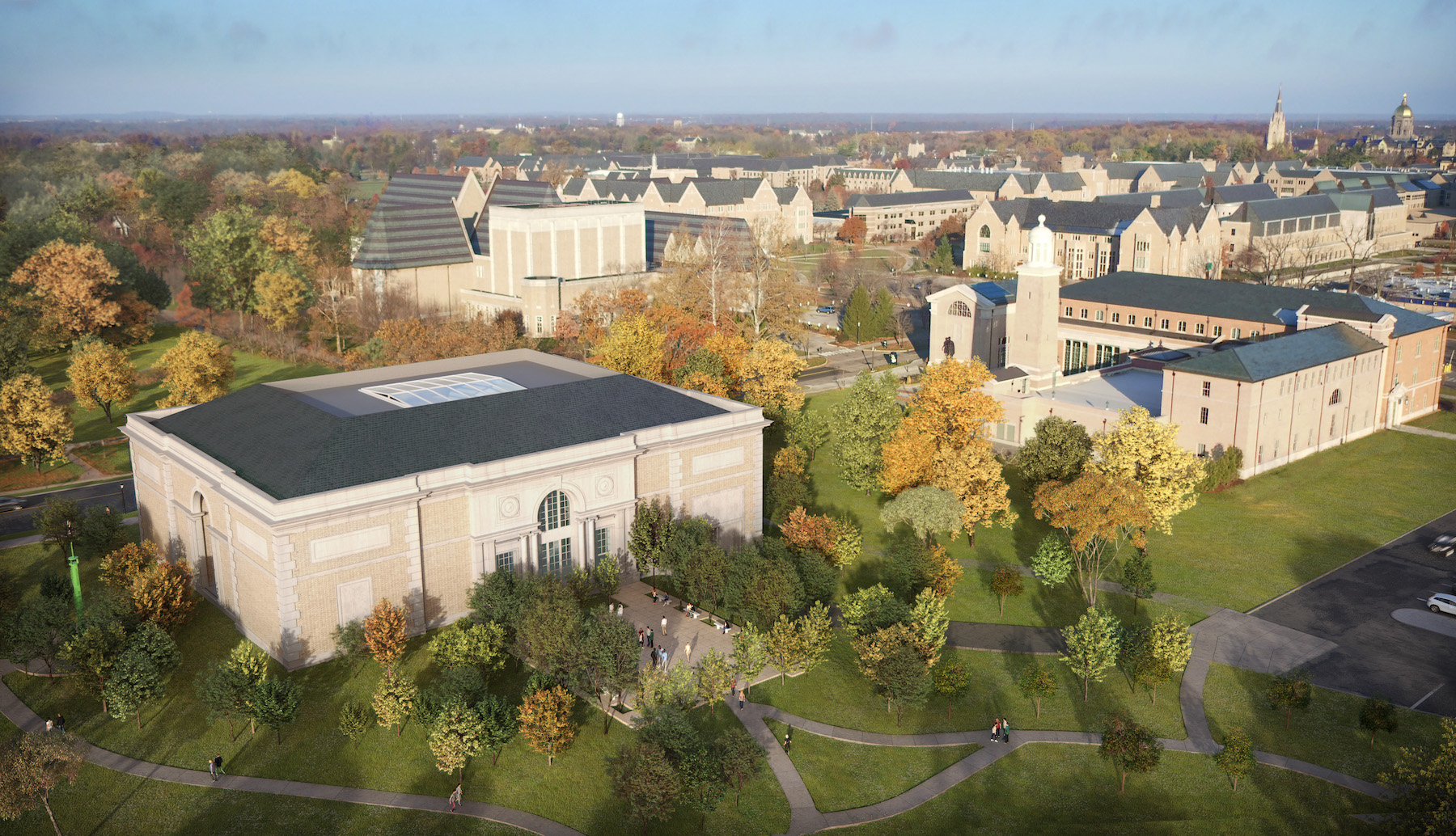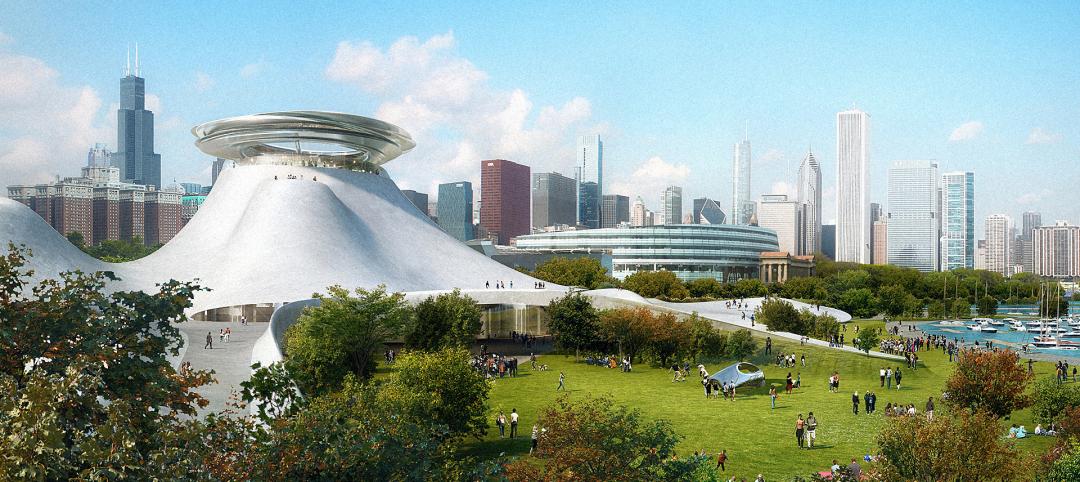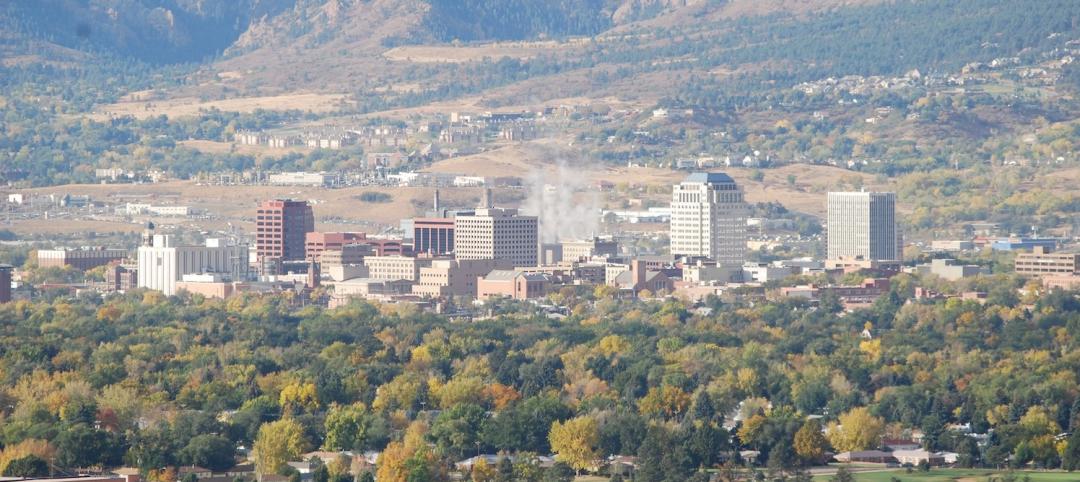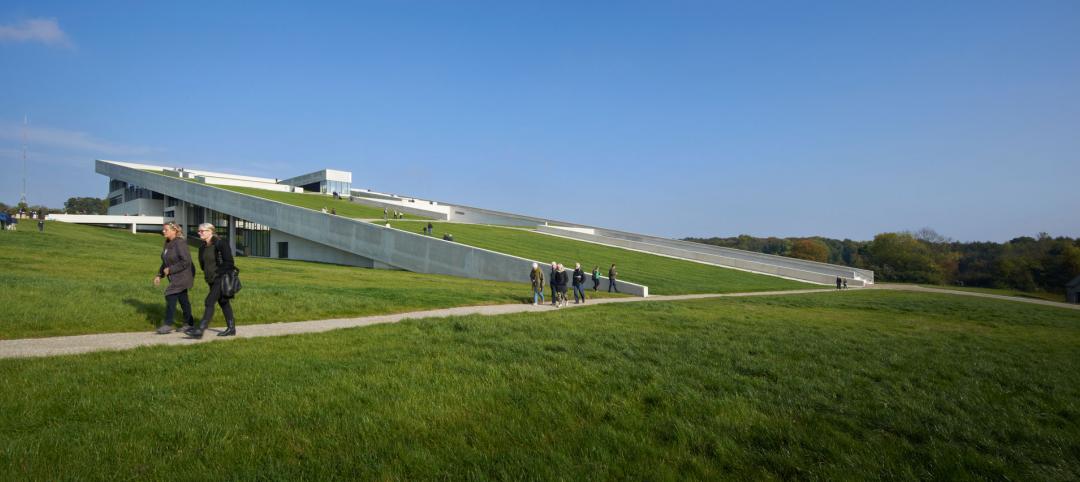Next November, the University of Notre Dame in Indiana is scheduled to open the first phase of Raclin Murphy Museum of Art, a 70,000-sf cultural facility that will eventually replace the campus’ venerable Snite Museum of Art and double the exhibit space available for Notre Dame’s 31,000-item art collection.
The building under construction establishes a new location for the museum, and is considered to be a “front door” to an arts district on the campus’ south side that already includes the DeBartolo Performing Arts Center, the nine-acre Charles B. Hayes Family Sculpture Park, and the Matthew and Joyce Walsh Family Hall of Architecture.
Long-term storage of Notre Dame’s vaunted collection of prints, drawings, and photography, along with most of the museum’s personnel, will remain at Snite until Phase 2 of this complex is realized. Phase 2’s start date and timeline have yet to be disclosed, but what’s known is that it will increase the size of the new museum complex to 132,000 sf, and provide more gallery space, offices, an auditorium, and a works-on-paper study center.
Robert A.M. Stern Architects (RAMSA) is the design architect on this project. The rest of the Building Team includes Bulley & Andrews (GC), the engineering firms Kohler Ronan (MEP), Thornton Tomasetti (SE) and TfL (CE); and Gallagher & Associates (exhibit design). The construction cost has not been disclosed.
Giving exhibits equal weight in the museum
Last week, BD+C interviewed RAMSA’s Melissa DelVecchio, FAIA, Partner; and Anthony McConnell, Senior Associate, about the Raclin museum’s design features within its three floors and a lower level.
DelVecchio noted that new construction was necessitated by the lack of available space near the Snite Museum for expansion. When Snite opened a generation ago, it was on the outer edge of what was then Notre Dame’s campus; now, it’s roughly in the middle of a significantly bigger campus. “It’s hard to find, and there’s no nearby parking,” she said.
Snite only has enough space to exhibit 2-3 percent of the museum’s collection, whereas Raclin will be able to show around 5%. DelVecchio pointed out, as well, that the new building will house a large temporary gallery and loading dock to better attract and handle traveling exhibits, something that Snite was not able to accommodate. The new building also will have more storage space that’s accessible to students for study purposes.
The galleries within Raclin revolve around a central, multi-height atrium that rises to a skylight, and the galleries themselves will have “equal prominence,” said McConnell, compared to some spaces in Snite that relegated the art to “second class” exhibition.
The lower level of Raclin “has no back,” he explained, in that its gallery for International Modern and Contemporary Art blends into the museum’s sculpture court. Raclin is also distinguished on its west side by an oval-shaped working chapel, Our Lady, Queen of Families, that will display some art and be near galleries with ecclesiastic art on display.
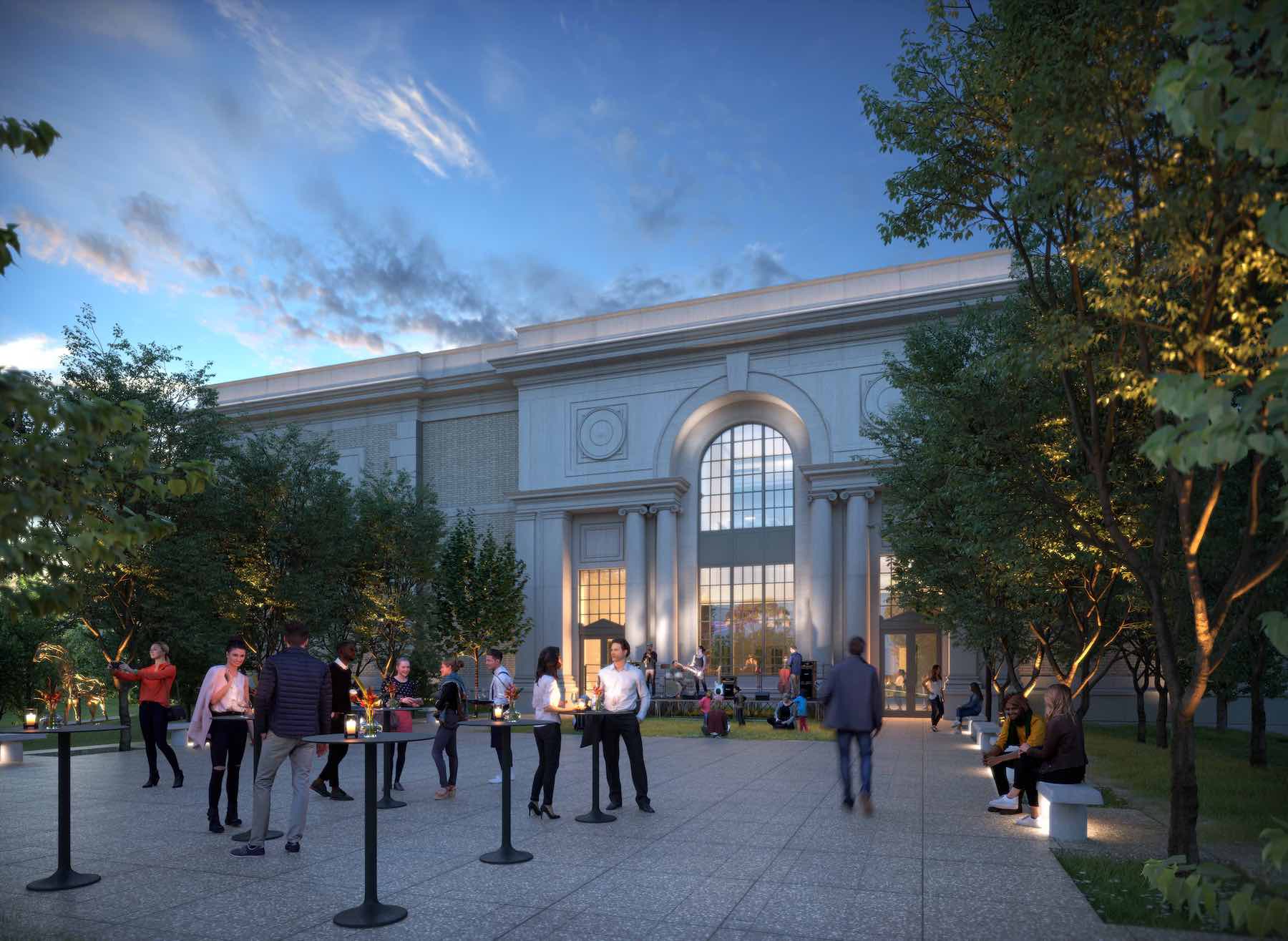
From an operational standpoint, the museum is designed to present zero thresholds for patrons with disabilities. That includes the installation of automated door openers for the facility’s restrooms.
The exterior design of this rectangular building is classical, and its materials will match the rest of the arts district and streetscape, said DelVelcchio.
Related Stories
| Nov 14, 2014
Bjarke Ingels unveils master plan for Smithsonian's south mall campus
The centerpiece of the proposed plan is the revitalization of the iconic Smithsonian castle.
| Nov 12, 2014
Chesapeake Bay Foundation completes uber-green Brock Environmental Center, targets Living Building certification
More than a decade after opening its groundbreaking Philip Merrill Environmental Center, the group is back at it with a structure designed to be net-zero water, net-zero energy, and net-zero waste.
| Nov 7, 2014
NORD Architects releases renderings for Marine Education Center in Sweden
The education center will be set in a landscape that includes small ponds and plantings intended to mimic an assortment of marine ecologies and create “an engaging learning landscape” for visitors to experience nature hands-on.
| Nov 5, 2014
The architects behind George Lucas' planned Chicago museum unveil 'futuristic pyramid'
Preliminary designs for the $300 million George Lucas Museum of Narrative Art have been unveiled, and it looks like a futuristic, curvy pyramid.
| Nov 3, 2014
IIT names winners of inaugural Mies Crown Hall Americas Prize
Herzog & de Meuron's iconic 1111 Lincoln Road parking garage in Miami Beach, Fla., is one of two winners of the $50,000 architectural prize.
| Oct 29, 2014
Diller Scofidio + Renfro selected to design Olympic Museum in Colorado Springs
The museum is slated for an early 2018 completion, and will include a hall of fame, theater, retail space, and a 20,000-sf hall that will showcase the history of the Olympics and Paralympics.
| Oct 23, 2014
Prehistory museum's slanted roof mimics archaeological excavation [slideshow]
Mimicking the unearthing of archaeological sites, Henning Larsen Architects' recently opened Moesgaard Museum in Denmark has a planted roof that slopes upward out of the landscape.
| Oct 16, 2014
Perkins+Will white paper examines alternatives to flame retardant building materials
The white paper includes a list of 193 flame retardants, including 29 discovered in building and household products, 50 found in the indoor environment, and 33 in human blood, milk, and tissues.
| Oct 15, 2014
Harvard launches ‘design-centric’ center for green buildings and cities
The impetus behind Harvard's Center for Green Buildings and Cities is what the design school’s dean, Mohsen Mostafavi, describes as a “rapidly urbanizing global economy,” in which cities are building new structures “on a massive scale.”
| Oct 12, 2014
AIA 2030 commitment: Five years on, are we any closer to net-zero?
This year marks the fifth anniversary of the American Institute of Architects’ effort to have architecture firms voluntarily pledge net-zero energy design for all their buildings by 2030.


